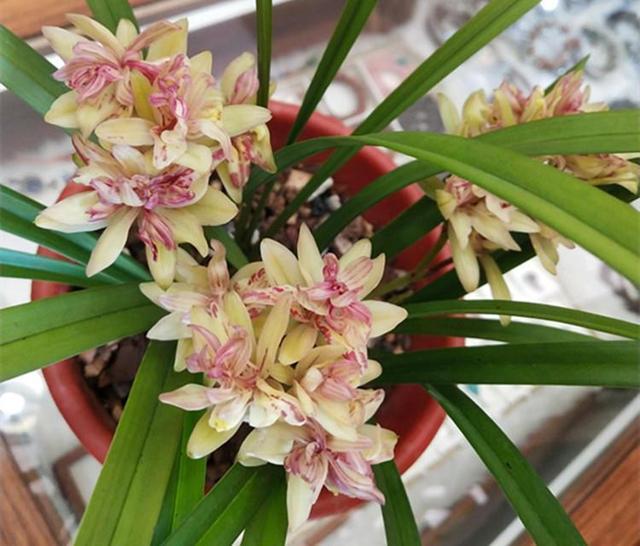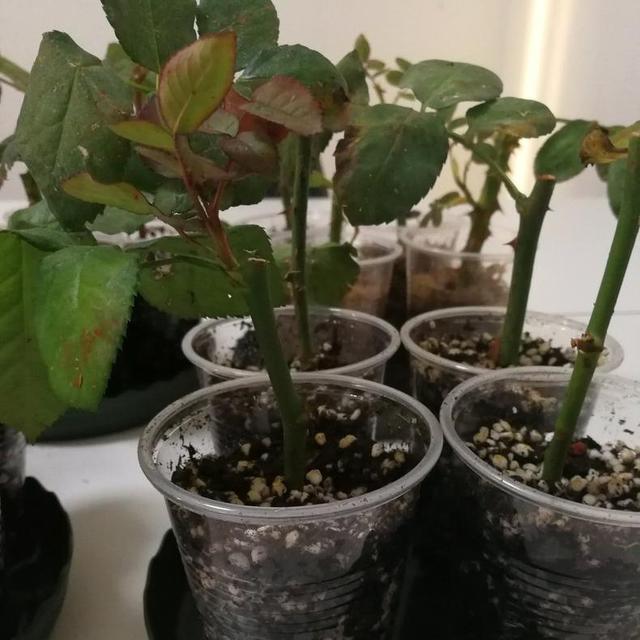Raising orchids can achieve the balance of root fungi and the flowering period will be long.

Orchids are fleshy roots and have no fibrous roots. Orchids symbiotic in fleshy roots absorb mineral nutrients from soil solution and provide them to orchids. On the other hand, the fleshy roots of orchids in turn provide necessary organic nutrients and water for orchids. They depend on each other and symbiosis with each other.
Therefore, the key to the cultivation of orchids is that the "root fungi" of orchids must be kept in a stable balance, so that the orchids can grow luxuriantly and bloom longer. So, how to maintain the balance of orchid "root fungi"? What florists need to do is to provide humus-rich soil for orchids and fertilize them as necessary.
Generally speaking, the rotten leaf soil rich in organic matter is used to grow orchids, and the soil is turned over every year or every other year. The soil contains enough nutrients for the growth and development of orchids, and liquid fertilizer can be used as topdressing without adding base fertilizer.
If the orchid pot has not changed soil for 3-4 years in a row, it is necessary to fertilize the orchid. On the one hand, appropriate base fertilizer can be added when preparing culture soil, such as fully fermented pig, cow, sheep dung, chicken manure or bean cake, oil crushed powder, broken cow horn powder, bone powder, plant ash and so on. But the amount should be appropriate, not too much.
On the other hand, a certain amount of topdressing can be added at the stage of growth and development, and the special organic liquid fertilizer for orchids can be used to dilute it 500 times. When applying it, it should be directly applied to the root of the orchid plant without splashing on the leaves of the orchid. Most of the nutrient solution is made of nitrogen, phosphorus, potassium and some trace elements, so it is necessary to master the concentration ratio when using it.
In addition, flower friends can also according to the needs of orchid growth and development, can apply potassium dihydrogen phosphate and other fertilizers to supplement nitrogen, phosphorus, potassium and other elements, but to strictly control the concentration and times.
If the orchid is cultivated with substrates such as volcanic stone, ceramsite, broken brick, perlite and so on, base fertilizer and topdressing must be applied. Base fertilizer is mostly made of chicken manure combined with some mineral nutrients, such as the size of broad bean particles. It can be used as base fertilizer when the orchid is put on the pot, or it can be laid flat on the basin surface at a distance of 3 centimeters, and it can be used as topdressing by continuous watering and leaching.
- Prev

The method of potted grape culture on the balcony to master the 6-point grapes are full of branches.
Click on the title to read this article, I believe it is the fans of grapes, with the continuous rise of potted fruits in recent years, once yard grapes have been moved into the balcony of high-rise buildings, potted grapes are both beautiful and delicious.
- Next

Fake planting of rose is not discussed in this way.
In the process of raising rose, we often hear such a word, false planting is not only heard when raising rose, but also very common in other flower planting, so what is the meaning of frequent false planting? First of all, let's talk about fake.
Related
- Wuhan Hospital Iron Tree Blooming Result Was Instantly Frightened by the Gardener Master
- Which variety of camellia is the most fragrant and best? Which one do you like best?
- What is the small blue coat, the breeding methods and matters needing attention of the succulent plant
- Dormancy time and maintenance management of succulent plants during dormancy
- Minas succulent how to raise, Minas succulent plant pictures
- What are the varieties of winter succulent plants
- How to raise succulent plants in twelve rolls? let's take a look at some experience of breeding twelve rolls.
- Attention should be paid to water control for succulent plants during dormant period (winter and summer)
- Watering experience of twelve rolls of succulent plants
- Techniques for fertilizing succulent plants. An article will let you know how to fertilize succulent plants.

